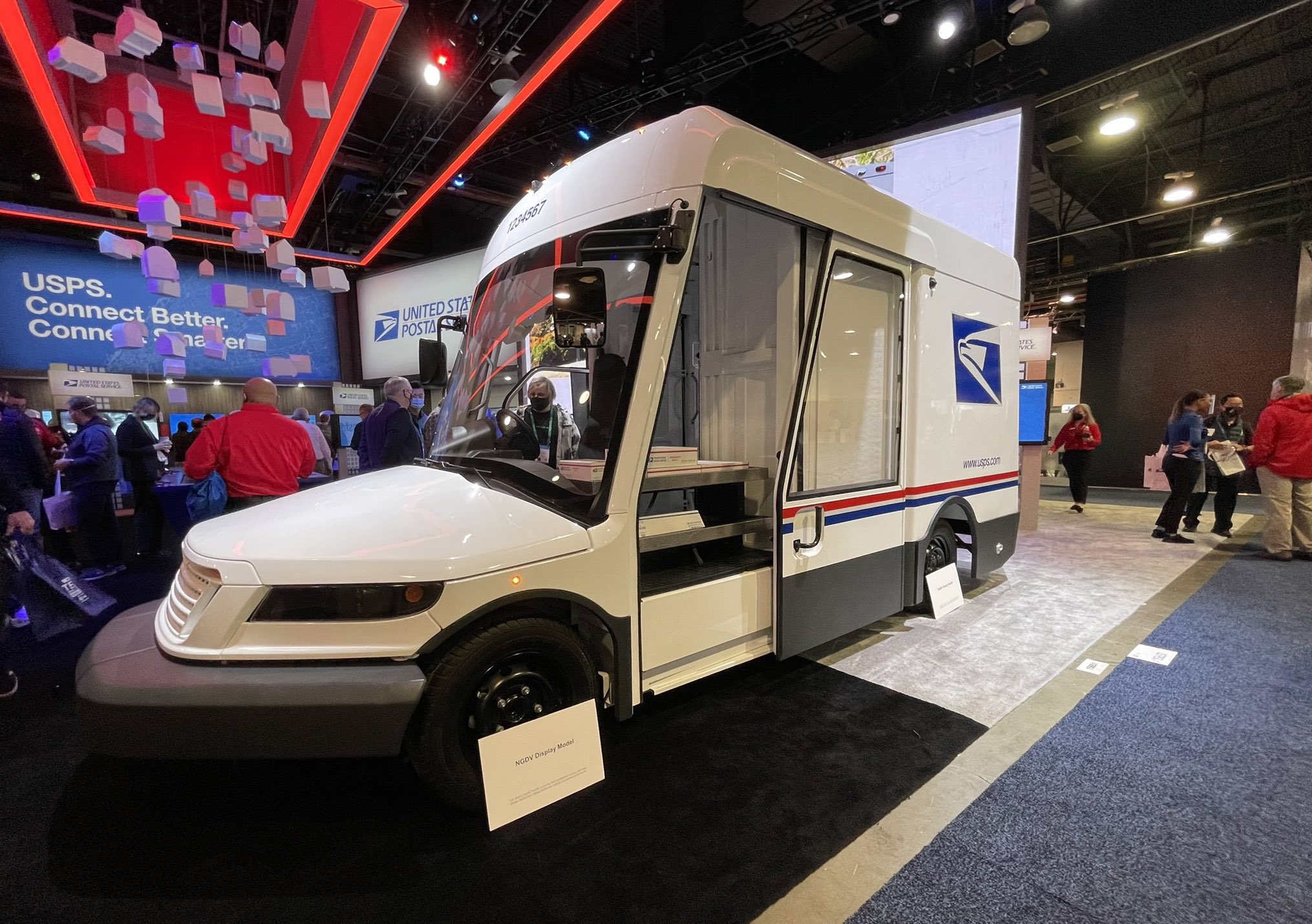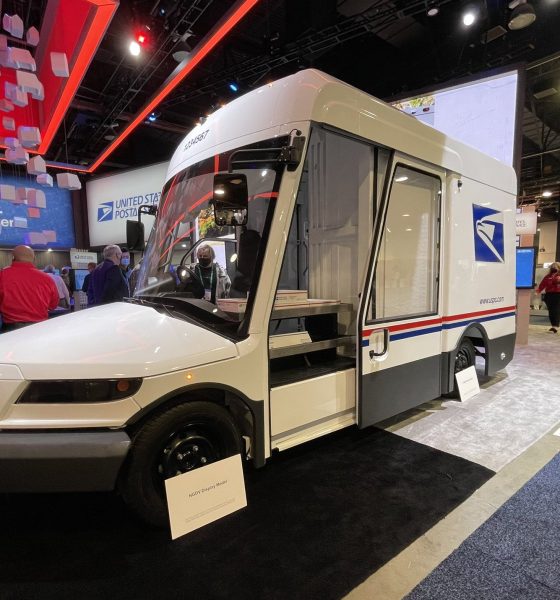

News
USPS Inspector General asked to investigate agency’s decision favoring gas delivery vans over EVs
A group of U.S. lawmakers in the House Oversight Committee sent a letter to the U.S. Postal Service (USPS) Inspector General (IG), requesting an investigation into the agency’s order for Next Generation Delivery Vehicles (NGDV).
In a letter dated Monday, March 14, Democrats in the House Oversight Committee asked IG Tammy L. Whitcomb to investigate the Postal Service’s compliance with the National Environmental Policy Act (NEPA). They questioned if the USPS complied with NEPA’s requirements for environmental reviews before finalizing its NGDV contract.
“We write to request that the Postal Service Office of Inspector General (OIG) initiate an investigation into the Postal Service’s compliance with the National Environmental Policy Act, particularly the filing of the Environmental Impact Statement (EIS) for the Next Generation Delivery Vehicle,” wrote the Members.
“The Environmental Protection Agency, the White House Council for Environmental Quality and numerous environmental stakeholders have raised concerns that the Postal Service did not meet its NEPA obligations during its contracting process for the NGDV. These significant concerns warrant an investigation by the OIG.”
Background
The USPS received some criticism from the Biden Administration after it announced plans to spend up to $11.3 billion on as many as 165,000 gas-powered NGDVs. The Biden Administration urged the Postal Service to reconsider its plans to buy mostly internal combustion engine (ICE) delivery vehicles to upgrade its fleet.
The USPS fleet makes up a third of the U.S. government fleet. President Biden ordered all federal agencies to phase out the purchase of gasoline-powered vehicles. Even though the Postal Service is an independent agency, its fleet’s transition to electric vehicles would symbolize the current administration’s determination to move away from fossil fuels.
After receiving some pushback from the Biden Administration about its NGDV plans, the Postal Service issued a statement on February 6, announcing its plans to submit an initial order for 5,000 electric delivery vans. The agency also shared its goals to achieve 70% fleet electrification within the decade.
The Issue
The Environmental Protection Agency (EPA), the White House Council for Environmental Quality (CEQ), and other environmental stakeholders are concerned that the Postal Service did not meet NEPA obligations when it announced a 10-year contract with Oshkosh to manufacture fossil fuel-powered NGDVs.
The EPA pointed out that critical features in the contract were not disclosed in the Postal Service’s final review or Environmental Impact Statement (EIS) for the NGDV program. The CEQ observed that the agency’s final review was “flawed in some ways that cannot be so easily remedied.”
The New York Times discovered some evidence that supported the CEQ’s claims. The Postal Service estimated that the NGDVs would get 29.9 miles per gallon in its review. However, the EPA found that the vehicles would only get 14.7 miles per gallon or even less if air conditioning was factored into the equation.
The Postal Service’s (Current) Stance
USPS published a 340-page Final Environmental Impact Statement (FEIS) under the NEPA process on January 7, 2022. The Postal Service later completed a record of decision (ROD), which featured the agency’s response to feedback from the EPA on the potential environmental impact of the NGDV program.
In its ROD, the Postal Service outlines its decision to purchase and deploy 50,000 to 165,000 NGDVs over the next ten years. It details that the NGDV fleet will be a mix of ICE and battery electric vehicle (BEV) delivery vans. All-electric NGDVs will make up at least 10% of the fleet. The Postal Service determined that ICE NGDVs were the “most achievable” alternative to replacing its existing fleet rather than BEV NGDV, given its financial condition.
“…BEV NGDV(s) ha(ve) a significantly higher total cost of ownership than the ICE NGDV, which is why the Preferred Alternative being implemented does not commit to more than 10 percent BEV NGDV. Finally, the Postal Service notes that the Preferred Alternative as implemented contains the flexibility to significantly increase the percentage of BEV NGDV should additional funding become available from any source,” stated the USPS in its latest ROD.
USPS Inspector General asked to investigate agency’s decision favoring gas delivery vans over EVs by Maria Merano on Scribd
The Teslarati team would appreciate hearing from you. If you have any tips, reach out to me at maria@teslarati.com or via Twitter @Writer_01001101.

Elon Musk
Elon Musk’s X will start using a Tesla-like software update strategy
The initiative seems designed to accelerate updates to the social media platform, while maintaining maximum transparency.

Elon Musk’s social media platform X will adopt a Tesla-esque approach to software updates for its algorithm.
The initiative seems designed to accelerate updates to the social media platform, while maintaining maximum transparency.
X’s updates to its updates
As per Musk in a post on X, the social media company will be making a new algorithm to determine what organic and advertising posts are recommended to users. These updates would then be repeated every four weeks.
“We will make the new 𝕏 algorithm, including all code used to determine what organic and advertising posts are recommended to users, open source in 7 days. This will be repeated every 4 weeks, with comprehensive developer notes, to help you understand what changed,” Musk wrote in his post.
The initiative somewhat mirrors Tesla’s over-the-air update model, where vehicle software is regularly refined and pushed to users with detailed release notes. This should allow users to better understand the details of X’s every update and foster a healthy feedback loop for the social media platform.
xAI and X
X, formerly Twitter, has been acquired by Elon Musk’s artificial intelligence startup, xAI last year. Since then, xAI has seen a rapid rise in valuation. Following the company’s the company’s upsized $20 billion Series E funding round, estimates now suggest that xAI is worth tens about $230 to $235 billion. That’s several times larger than Tesla when Elon Musk received his controversial 2018 CEO Performance Award.
As per xAI, the Series E funding round attracted a diverse group of investors, including Valor Equity Partners, Stepstone Group, Fidelity Management & Research Company, Qatar Investment Authority, MGX, and Baron Capital Group, among others. Strategic partners NVIDIA and Cisco Investments also continued support for building the world’s largest GPU clusters.
News
Tesla FSD Supervised wins MotorTrend’s Best Driver Assistance Award
The decision marks a notable reversal for the publication from prior years, with judges citing major real-world improvements that pushed Tesla’s latest FSD software ahead of every competing ADAS system.

Tesla’s Full Self-Driving (Supervised) system has been named the best driver-assistance technology on the market, earning top honors at the 2026 MotorTrend Best Tech Awards.
The decision marks a notable reversal for the publication from prior years, with judges citing major real-world improvements that pushed Tesla’s latest FSD software ahead of every competing ADAS system. And it wasn’t even close.
MotorTrend reverses course
MotorTrend awarded Tesla FSD (Supervised) its 2026 Best Tech Driver Assistance title after extensive testing of the latest v14 software. The publication acknowledged that it had previously criticized earlier versions of FSD for erratic behavior and near-miss incidents, ultimately favoring rivals such as GM’s Super Cruise in earlier evaluations.
According to MotorTrend, the newest iteration of FSD resolved many of those shortcomings. Testers said v14 showed far smoother behavior in complex urban scenarios, including unprotected left turns, traffic circles, emergency vehicles, and dense city streets. While the system still requires constant driver supervision, judges concluded that no other advanced driver-assistance system currently matches its breadth of capability.
Unlike rival systems that rely on combinations of cameras, radar, lidar, and mapped highways, Tesla’s FSD operates using a camera-only approach and is capable of driving on city streets, rural roads, and freeways. MotorTrend stated that pure utility, the ability to handle nearly all road types, ultimately separated FSD from competitors like Ford BlueCruise, GM Super Cruise, and BMW’s Highway Assistant.
High cost and high capability
MotorTrend also addressed FSD’s pricing, which remains significantly higher than rival systems. Tesla currently charges $8,000 for a one-time purchase or $99 per month for a subscription, compared with far lower upfront and subscription costs from other automakers. The publication noted that the premium is justified given FSD’s unmatched scope and continuous software evolution.
Safety remained a central focus of the evaluation. While testers reported collision-free operation over thousands of miles, they noted ongoing concerns around FSD’s configurable driving modes, including options that allow aggressive driving and speeds beyond posted limits. MotorTrend emphasized that, like all Level 2 systems, FSD still depends on a fully attentive human driver at all times.
Despite those caveats, the publication concluded that Tesla’s rapid software progress fundamentally reshaped the competitive landscape. For drivers seeking the most capable hands-on driver-assistance system available today, MotorTrend concluded Tesla FSD (Supervised) now stands alone at the top.
News
Elon Musk’s Grokipedia surges to 5.6M articles, almost 79% of English Wikipedia
The explosive growth marks a major milestone for the AI-powered online encyclopedia, which was launched by Elon Musk’s xAI just months ago.

Elon Musk’s Grokipedia has grown to an impressive 5,615,201 articles as of today, closing in on 79% of the English Wikipedia’s current total of 7,119,376 articles.
The explosive growth marks a major milestone for the AI-powered online encyclopedia, which was launched by Elon Musk’s xAI just months ago. Needless to say, it would only be a matter of time before Grokipedia exceeds English Wikipedia in sheer volume.
Grokipedia’s rapid growth
xAI’s vision for Grokipedia emphasizes neutrality, while Grok’s reasoning capabilities allow for fast drafting and fact-checking. When Elon Musk announced the initiative in late September 2025, he noted that Grokipedia would be an improvement to Wikipedia because it would be designed to avoid bias.
At the time, Musk noted that Grokipedia “is a necessary step towards the xAI goal of understanding the Universe.”
Grokipedia was launched in late October, and while xAI was careful to list it only as Version 0.1 at the time, the online encyclopedia immediately earned praise. Wikipedia co-founder Larry Sanger highlighted the project’s innovative approach, noting how it leverages AI to fill knowledge gaps and enable rapid updates. Netizens also observed how Grokipedia tends to present articles in a more objective manner compared to Wikipedia, which is edited by humans.
Elon Musk’s ambitious plans
With 5,615,201 total articles, Grokipedia has now grown to almost 79% of English Wikipedia’s article base. This is incredibly quick, though Grokipedia remains text-only for now. xAI, for its part, has now updated the online encyclopedia’s iteration to v0.2.
Elon Musk has shared bold ideas for Grokipedia, including sending a record of the entire knowledge base to space as part of xAI’s mission to preserve and expand human understanding. At some point, Musk stated that Grokipedia will be renamed to Encyclopedia Galactica, and it will be sent to the cosmos.
“When Grokipedia is good enough (long way to go), we will change the name to Encyclopedia Galactica. It will be an open source distillation of all knowledge, including audio, images and video. Join xAI to help build the sci-fi version of the Library of Alexandria!” Musk wrote, adding in a later post that “Copies will be etched in stone and sent to the Moon, Mars and beyond. This time, it will not be lost.”








